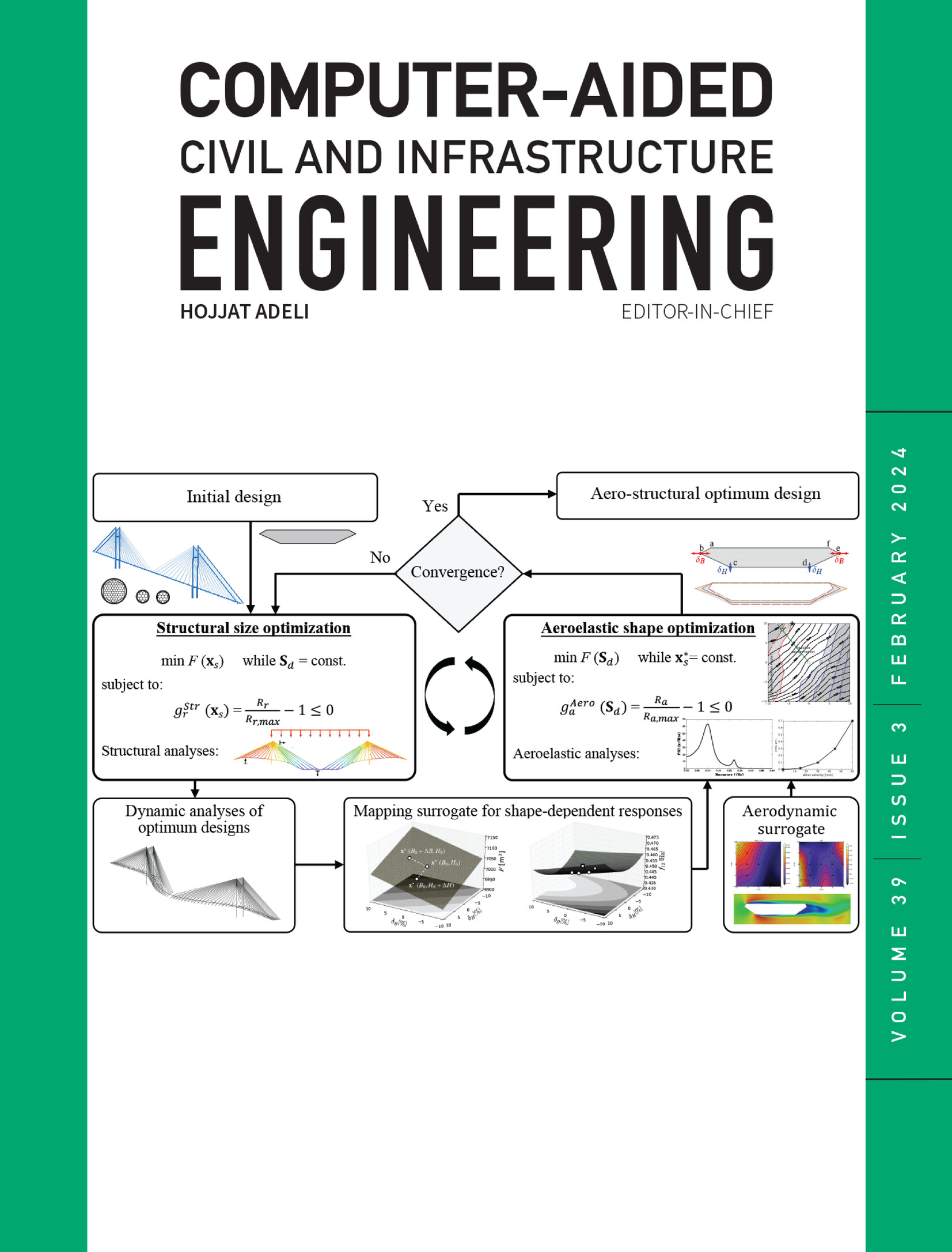Bridge damage identification based on synchronous statistical moment theory of vehicle–bridge interaction
IF 8.5
1区 工程技术
Q1 COMPUTER SCIENCE, INTERDISCIPLINARY APPLICATIONS
引用次数: 0
Abstract
Considering the weak noise resistance and low identification efficiency of traditional bridge damage identification methods, a data-driven approach based on synchronous statistical moment theory and vehicle–bridge interaction vibration theory is proposed. This method involves two main steps. First, a two-axle test vehicle is used to collect acceleration response signals synchronously from adjacent designated measurement points while stationary. This operation is repeated to calculate the second-order statistical moment curvature (SOSMC) difference of entire bridge points corresponding signals in different states. By comparing with the reference value, the preliminary damage location of the bridge can be obtained. Second, the first-order modal shape curve is constructed using the second-order statistical moment (SOSM). The refined identification of bridge damage is then based on an improved direct stiffness back calculation of the bridge's stiffness. This article proposes the synchronization theory for the first time and combines it with the statistical moment clustering method, forming an innovative approach to obtaining structural vibration modes. The effectiveness of this method has been well validated through numerical simulations with different parameters and on-site bridge tests. The research results indicate that SOSMC indicators have better noise resistance and higher recognition efficiency in identifying damage locations, compared to modal curvature and flexibility curvature indicators. Additionally, compared to transfer rate and random subspace methods, the SOSM method results in smaller error and higher identification efficiency.基于车桥相互作用同步统计力矩理论的桥梁损伤识别
考虑到传统的桥梁损伤识别方法抗噪声能力弱、识别效率低,提出了一种基于同步统计力矩理论和车桥相互作用振动理论的数据驱动方法。该方法包括两个主要步骤。首先,使用一辆双轴测试车在静止状态下从相邻的指定测量点同步采集加速度响应信号。重复此操作,计算整个桥点在不同状态下对应信号的二阶统计力矩曲率(SOSMC)差。通过与参考值进行比较,可以初步得出桥梁的损坏位置。其次,利用二阶统计力矩(SOSM)构建一阶模态振型曲线。然后,基于改进的桥梁刚度直接反演计算,对桥梁损伤进行精细识别。本文首次提出了同步理论,并将其与统计力矩聚类方法相结合,形成了一种获取结构振动模式的创新方法。通过不同参数的数值模拟和现场桥梁试验,充分验证了该方法的有效性。研究结果表明,与模态曲率和柔性曲率指标相比,SOSMC 指标具有更好的抗噪性和更高的识别效率,可以识别出损伤位置。此外,与转移率和随机子空间方法相比,SOSM 方法的误差更小,识别效率更高。
本文章由计算机程序翻译,如有差异,请以英文原文为准。
求助全文
约1分钟内获得全文
求助全文
来源期刊
CiteScore
17.60
自引率
19.80%
发文量
146
审稿时长
1 months
期刊介绍:
Computer-Aided Civil and Infrastructure Engineering stands as a scholarly, peer-reviewed archival journal, serving as a vital link between advancements in computer technology and civil and infrastructure engineering. The journal serves as a distinctive platform for the publication of original articles, spotlighting novel computational techniques and inventive applications of computers. Specifically, it concentrates on recent progress in computer and information technologies, fostering the development and application of emerging computing paradigms.
Encompassing a broad scope, the journal addresses bridge, construction, environmental, highway, geotechnical, structural, transportation, and water resources engineering. It extends its reach to the management of infrastructure systems, covering domains such as highways, bridges, pavements, airports, and utilities. The journal delves into areas like artificial intelligence, cognitive modeling, concurrent engineering, database management, distributed computing, evolutionary computing, fuzzy logic, genetic algorithms, geometric modeling, internet-based technologies, knowledge discovery and engineering, machine learning, mobile computing, multimedia technologies, networking, neural network computing, optimization and search, parallel processing, robotics, smart structures, software engineering, virtual reality, and visualization techniques.

 求助内容:
求助内容: 应助结果提醒方式:
应助结果提醒方式:


